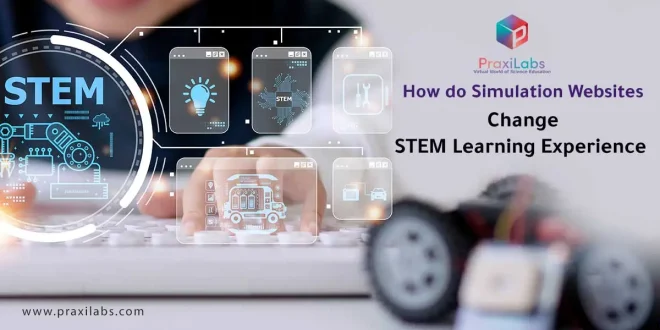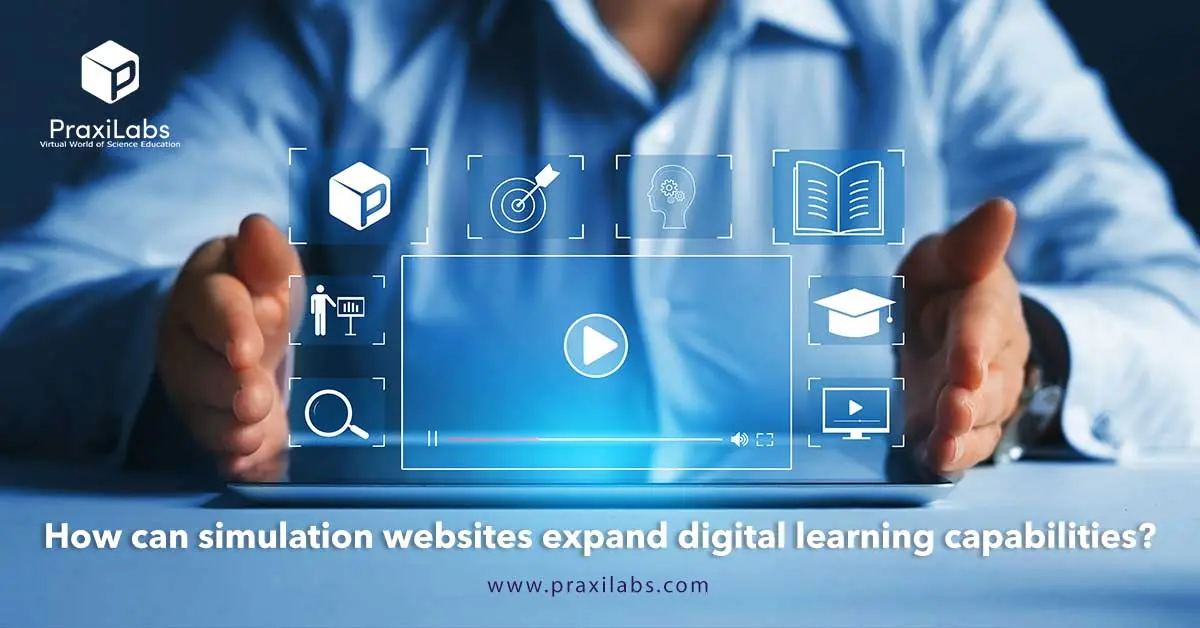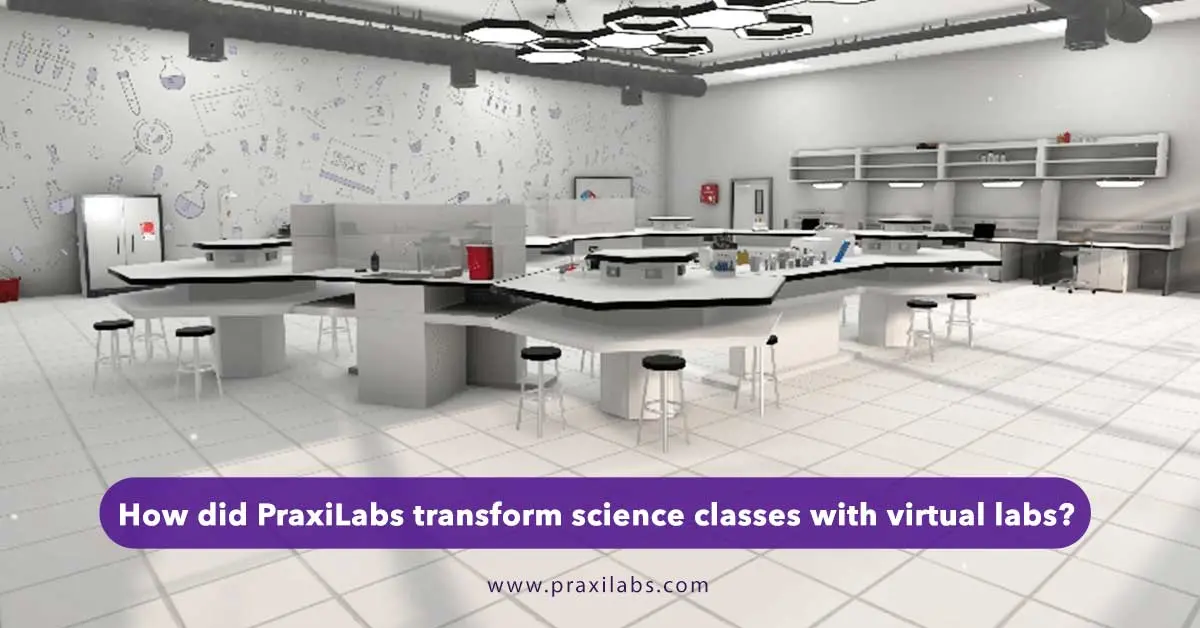Last Updated on November 23, 2025 by Muhamed Elmesery
In today’s digital classrooms, simulation websites are transforming how students explore science. By turning complex theories into interactive, hands-on experiments, these virtual platforms make STEM learning more accessible, engaging, and practical.
They bridge the gap between theory and application—allowing learners to experiment safely, visualize abstract concepts, and develop real scientific skills anytime, anywhere.
Table of Contents
What are simulation websites?
Simulation websites are web-based simulations, or online platforms, that allow users to access simulations via web links and immediately run them in a web browser. These simulations replicate real-world situations in different fields within a virtual environment.
What is the purpose of science simulations?
Some of the most important uses and purposes of science simulations:
Interactive Simulation: Allows students to conduct various interactive experiments, understand complex mechanisms, and analyze results in an environment that simulates a real laboratory.
Enhancing Safety: Reduces the risks of handling hazardous materials, making the learning experience safer for students.
Deeper Understanding of Concepts: Helps connect theoretical knowledge with practical application through an immersive 3D interactive environment.
Conducting advanced scientific Experiments: Enables the performance of advanced experiments in fields such as biology, physics, and chemistry, including DNA extraction.
Explore our DNA Extraction Virtual Lab
Access Anytime, Anywhere: Allows students to perform experiments from any location without time or place restrictions, providing great flexibility in learning.
Simulation of Specific Tools: Allows students to practice using specialized equipment such as centrifuges, –spectrophotometers, incubators, and micropipettes.
What are the common applications of simulation websites?
One of the most common applications of simulation websites is virtual lab simulations.
Virtual simulations technology contributes to science education by providing virtual science laboratories that closely mimic real laboratories, but in a digital environment and offers students additional advantages such as the ability to conduct various experiments anytime and anywhere.
Let us explore the main features of virtual science laboratories for students and institutions:
Immersive and Interactive Environment:
Virtual laboratories provide an immersive and direct interactive experience that simulates the real laboratory environment, giving students the opportunity to learn practically in a realistic way.
Enhancing Safety:
Using the virtual lab ensures the protection of learners from any risks they may encounter during training in real laboratories. It is an effective way to prevent laboratory accidents by completely avoiding dealing with hazardous materials. Therefore, virtual labs provide a safe environment for learners and ensure their complete safety.
Enhancing Knowledge Retention and Absorption:
Virtual lab simulations provide scenario-based interactive learning, which enhances learners’ information retention and increases their engagement. Moreover, they are easily accessible to large numbers of students.
Data Analysis and Tracking:
Virtual labs enable precise tracking of learners’ progress, allowing teachers to know the current status of each student, the steps they have completed, and the areas that need improvement, while providing multimedia-based reports that help in developing the educational process.
How can simulation websites expand digital learning capabilities?
Simulation websites for students expand digital learning capabilities by providing immersive, risk-free environments for experiential learning, fostering critical thinking and practical skill development, and making education more accessible and engaging.
For institutions that need to train a large number of students at the same time, virtual laboratories are the ideal choice. They can accommodate hundreds of users simultaneously, making them highly scalable without the need for additional infrastructure.
Are there any limitations of simulation websites?
Simulation websites may have some limitations such as:
- Over-reliance on simulations.
- Technical issues.
- Limited interpersonal skills training.
- Lack of real-world experience.
- Accessibility challenges, as not all students may have access to the necessary technology.
How did PraxiLabs transform science classes with virtual labs?
According to a study that compared the effectiveness of the virtual lab (PraxiLabs) and physical laboratory activities on secondary school students’ achievement in chemistry.
The population comprised all second-year secondary school students offering chemistry, from which a sample size of 87 was obtained after purposive sampling of two schools, which were randomly assigned to the virtual and physical laboratory groups.
It was found that no significant difference existed in the achievement of students exposed to virtual and physical laboratory activities, and no insignificant difference based on gender between the two groups.
It was concluded that a virtual laboratory (PraxiLabs) can match a physical laboratory in enhancing students’ achievement in chemistry; hence, it could be incorporated into students’ lab experiences.
PraxiLabs’ edtech awards as a virtual simulations website
Over the years, PraxiLabs has received numerous prestigious awards and certifications that highlight its innovation, impact, and leadership in virtual science education:
- UN SDGs Award in Education – Honored by the United Nations for advancing sustainable education through accessible virtual science labs.
- Africa’s Business Heroes Competition – First Place – Selected from over 12,000 applicants across 54 African countries for outstanding innovation and social impact in EdTech.
- STEM.org Accredited™ Certification – Officially accredited by STEM.org for meeting the highest standards in delivering quality STEM education and fostering scientific learning through interactive simulations.
- Nexus Awards Finalist– Reached the top five nominees for EdTech Startup of the Year, recognizing PraxiLabs’ continued excellence and leadership in educational technology.
Why simulation websites are the future of learning?
The future of education is now heading towards e-learning. Among the tools used in e-learning are 3d simulation websites, or virtual labs which have many benefits. The student is exposed to a virtual learning environment similar to a real physical lab. The virtual lab allows the student to enjoy performing experiments safely and obtaining results using the computer.
Frequently Asked Questions
What is a simulator?
Simulator websites are computer based models or environments that mimic real world systems or scenarios, used for training, decision-making, testing, education, and more.
What’s the best physics simulator?
PraxiLabs virtual physics lab is one of the best physics simulators. Our virtual labs can accurately mimic difficult scientific processes, offering students a meaningful educational experience that prepares them for further scientific endeavors.
We provide virtual labs for physics science experiments in properties of matter, waves, modern physics, heat and thermodynamics, mechanics, magnetism, and electricity.
How accurate are digital science simulators?
Digital science simulators today are highly accurate, especially those built on validated scientific models and real experimental data. Their accuracy depends on several factors, but in most modern platforms—like biology, physics and virtual chemistry lab, —the results are reliable enough to support real academic learning and research training.
 PraxiLabs A virtual world of science
PraxiLabs A virtual world of science








